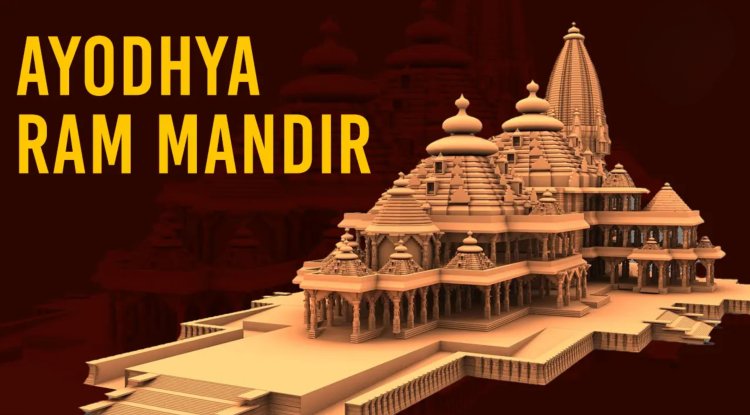Roses are Red, Traditions are Blue: Exploring the History and Evolution of Valentine's Day
Love takes center stage every February 14th, adorned in hues of red, showered with roses, and whispered in sweet nothings. But have you ever wondered how this day of love came to be? Delving into the history and evolution of Valentine's Day reveals a fascinating journey, intricately woven with myths, legends, and cultural transformations.

Ancient Whispers: The Seeds of Roman Rituals
The earliest whispers of Valentine's Day can be traced back to ancient Rome. Two distinct festivals potentially contributed to its modern-day form:
- Lupercalia: Celebrated annually from February 13th to 15th, this fertility festival involved animal sacrifices, purification rituals, and a lottery-like pairing of young men and women for a year. While not directly linked to romantic love, its focus on fertility and pairing might hold a distant echo in contemporary traditions.
- Feast of Lupercalia: Coinciding with Lupercalia, this festival honored Juno, the Roman goddess of women and marriage. Offerings and prayers for blessings in love and childbirth were common, potentially laying the groundwork for later associations with love and romance.
The Martyrdom of Valentine: Unraveling the Mystery
The story of a specific Saint Valentine adds another layer to the legend. However, historical accounts remain murky, with several possible figures emerging through the centuries. Two prominent narratives stand out:
-
Valentine the Priest: During the reign of Emperor Claudius II, Emperor Claudius banned marriage for young men, believing it made them unfit soldiers. A priest named Valentine defied the decree, secretly performing marriages for young couples. When discovered, he was imprisoned and eventually executed on February 14th, 270 AD.
-
Valentine the Bishop: Another legend recounts the story of Valentine, the Bishop of Terni, who secretly married Christian couples against the decree of Emperor Claudius Gothicus. He, too, was imprisoned and martyred on February 14th.
While the historical accuracy of these accounts remains debated, the martyrdom of a Valentine figure during the month of love cemented the date in the popular imagination.
Medieval Metamorphosis: Love Letters and Chivalric Codes
Fast forward to the Middle Ages, Valentine's Day witnessed a significant transformation. Geoffrey Chaucer's "Parliament of Fowls" (1382) mentions February 14th as a day when birds choose their mates, solidifying the association with romantic love. The practice of exchanging handwritten love notes, known as "valentines," became popular in the 14th and 15th centuries, particularly in France and England. These early valentines often contained poems, riddles, and declarations of love, laying the groundwork for the Hallmark cards of today.
Furthermore, the rise of courtly love and chivalric codes during the Middle Ages further romanticized the day. Knights pledged their devotion to noblewomen, expressing their love through symbolic gestures and elaborate verses. This chivalric ideal, though often idealized and unequal, further ingrained the notion of Valentine's Day as a celebration of love and devotion.
Victorian Flourish: From Handmade to Hallmark
By the Victorian era, Valentine's Day had become a full-blown commercial phenomenon. The invention of the printing press in the 18th century facilitated the mass production of pre-made valentines, often adorned with lace, ribbons, and sentimental verses. These commercially produced cards catered to a wider audience, allowing people from all walks of life to express their affection.
The Victorians also popularized the tradition of exchanging gifts like chocolates, flowers, and jewelry. Red roses, symbolizing passion and love, became synonymous with Valentine's Day, thanks to Victorian-era writers like Charles Dickens who associated them with romance in their novels.
Modern Transformations: Inclusivity and Beyond Romance
The 20th and 21st centuries witnessed further evolution of Valentine's Day traditions. Hallmark Cards capitalized on the commercial potential of the day, solidifying its association with romantic love and gift-giving. However, recent years have seen a shift towards inclusivity and diversity in how people celebrate the occasion.
There's a growing trend of celebrating self-love, platonic friendships, and familial bonds on Valentine's Day. Galentine's Day, dedicated to celebrating female friendships, is gaining popularity, while single individuals increasingly treat themselves to gifts and experiences on this day. This shift reflects a broader societal move towards recognizing and celebrating different forms of love and connection.
Beyond the Cards and Chocolates: Exploring Alternative Traditions
While commercially driven traditions remain prevalent, many choose to celebrate Valentine's Day in unique and meaningful ways:
- Volunteering or donating to charities: Acts of kindness and philanthropy offer a heartwarming way to spread love beyond personal relationships.
- Engaging in shared activities: Couples and friends can explore their shared interests through activities like cooking a romantic meal together, attending a concert or play, or embarking on a nature hike.
- Creating personalized experiences: Handmade gifts, handwritten poems, or personalized scavenger hunts add a unique touch to the celebration.
- Focusing on self-care and personal growth: Spa days, meditation sessions, or engaging in hobbies can be a wonderful way to express self-love and appreciation.
A World Tour of Love: Diverse Traditions and Unique Customs for Valentine's Day
While the essence of Valentine's Day might revolve around love and connection, its expression takes on vibrant and diverse forms across the globe. Here's a glimpse into how different cultures celebrate this day, showcasing its fascinating adaptability:
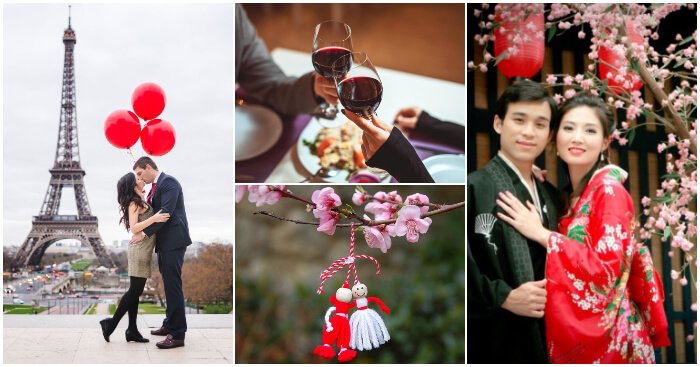
East Asia:
- Japan: In a reversal of roles, women traditionally gift chocolates to men on Valentine's Day. Men reciprocate a month later on "White Day" with white chocolate or gifts. South Korea follows a similar pattern, adding "Black Day" where single friends gather to eat black noodles and celebrate singledom.
- China: While not a traditional holiday, Valentine's Day has gained popularity in recent years, with couples celebrating with romantic dinners, flowers, and exchanging gifts like red envelopes with money.
Europe:
- Italy: February 14th coincides with St. Valentine's feast day, making it a religious celebration alongside romantic gestures. Couples exchange "bignè," fried pastries filled with cream, and attend church services.
- Denmark: Instead of cards, Danes express their love through "gaekkebrev," anonymous love letters filled with witty rhymes and riddles. The recipient, upon guessing the sender, gets an Easter egg reward.
- Wales: February 14th celebrates St. Dwynwen, the Welsh patron saint of lovers. Traditionally, men gifted intricately carved wooden spoons symbolizing domesticity and affection to their sweethearts.
Latin America:
- Brazil: Known as "Dia dos Namorados," Valentine's Day is celebrated on June 12th, coinciding with St. Anthony's feast day, the patron saint of love and marriage. Proposals and weddings are popular on this day.
- Colombia: "Día del Amor y la Amistad" (Day of Love and Friendship) celebrates both romantic and platonic love. Friends exchange gifts and cards, often featuring yellow carnations.
Africa:
- South Africa: In a unique tradition, women pin the names of their crushes on their sleeves, adding a playful twist to expressing affection. February 14th also sees mass weddings held on Robben Island, symbolizing love and second chances.
- Ghana: "Chocolate Day" falls on February 14th, celebrating cocoa farmers and promoting local chocolate consumption. Couples enjoy locally produced chocolate and participate in festivities throughout the day.
Other Interesting Traditions:
- Philippines: "Giant Lantern Festival" in Pampanga showcases beautifully lit lanterns, symbolizing wishes and love for loved ones.
- Slovenia: In some regions, young men whip young women gently with decorated willow branches, believed to bring fertility and good luck.
These are just a few examples of the diverse ways cultures around the world celebrate Valentine's Day. From gift-giving rituals to symbolic gestures, each tradition reflects unique cultural values and beliefs about love and connection. As we embrace these diverse expressions, we gain a richer understanding of the multifaceted nature of love and its celebration across the globe.
Love in Nuances: Varying Popularity and Acceptance of Valentine's Day Across Cultures
While Valentine's Day seems ubiquitous in a globalized world, its popularity and acceptance vary significantly across continents, influenced by cultural and religious norms. Let's dive into this diverse landscape:
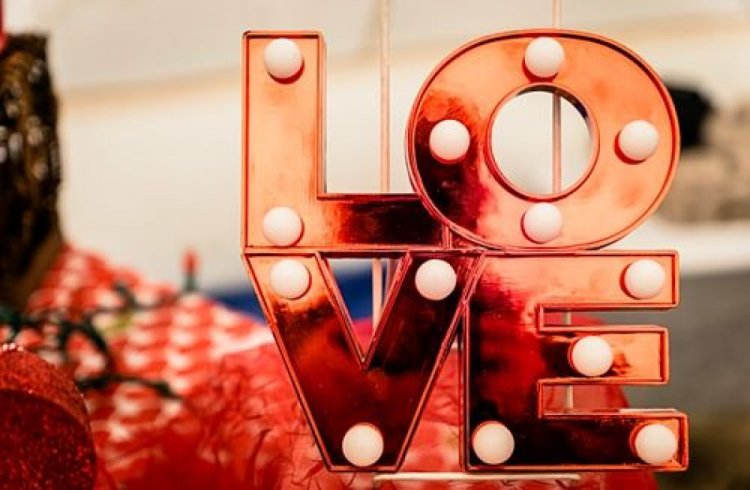
High Tide of Love:
- Western World: In traditionally Christian countries like the US, UK, and Canada, Valentine's Day enjoys widespread acceptance and commercial success. Gift-giving, card exchanges, and romantic dinners dominate the scene, fueled by strong media influences and a long history of the holiday's integration into popular culture.
- East Asia: Japan, South Korea, and China exhibit a unique phenomenon. While not traditional holidays, Valentine's Day and its derivatives like "White Day" have gained popularity, particularly among younger generations. The focus leans towards gift-giving, with chocolates and white chocolate taking center stage.
Mixed Emotions:
- Islamic World: Valentine's Day often faces criticism in Muslim-majority countries for contradicting cultural and religious values. Some view it as promoting Western cultural imperialism and undermining traditional norms of courtship and marriage. However, younger generations, influenced by globalization, sometimes celebrate it privately or in modified forms.
- India: The holiday receives mixed reactions. Urban areas with strong Western influences see celebrations, while conservative regions often express opposition, citing cultural incompatibility and concerns about moral values.
Emerging Acceptance:
- Latin America: Valentine's Day, often celebrated on different dates like June 12th in Brazil, enjoys growing popularity. However, cultural diversity leads to varying levels of acceptance. While urban populations engage eagerly, rural areas might hold more traditional views on love and relationships.
- Africa: The continent holds diverse perspectives. Countries like South Africa and Ghana embrace the day with unique traditions, showcasing a blend of Western influence and local customs. However, some regions might hold reservations due to religious or cultural reasons.
Factors Shaping Acceptance:
- Cultural Values: Societies with strong emphasis on familial bonds and arranged marriages might view Valentine's Day as individualistic and conflicting with their values.
- Religious Influence: Religions with conservative views on courtship and romantic expression might disapprove of the holiday's perceived emphasis on materialism and public displays of affection.
- Generational Divide: Younger generations, often more exposed to globalization and Western media, might be more receptive to celebrating Valentine's Day, while older generations hold onto traditional norms.
Moving Forward:
Understanding these diverse perspectives is crucial. As the world becomes increasingly interconnected, respecting cultural norms and religious beliefs while appreciating the evolving nature of love and its expression is essential. Valentine's Day, in its various forms, can serve as a reminder of the universality of love while acknowledging the rich tapestry of cultural practices that celebrate it.
Love on Screen, Pages, and Airwaves: How Media Shapes Valentine's Day Perceptions
Movies, books, and music play a powerful role in shaping our imaginations and perceptions, and Valentine's Day is no exception. These mediums hold the ability to romanticize the day, create unrealistic expectations, and even challenge traditional narratives, impacting how we perceive and celebrate love.
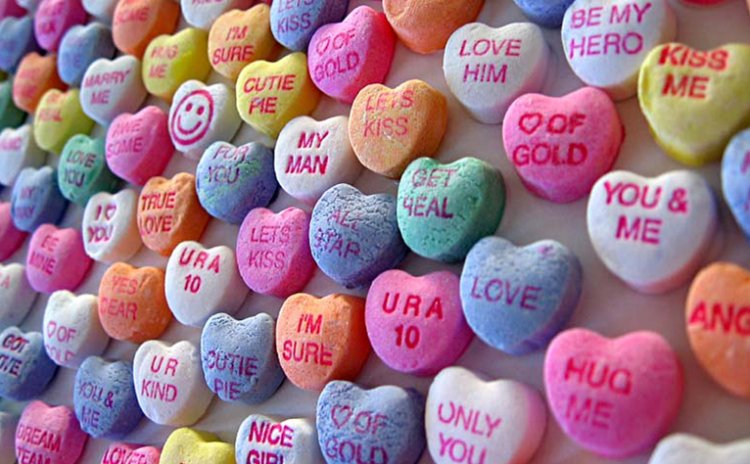
Positive Influences:
- Romantic Ideals: Classic films like "Casablanca" and "The Notebook" present enduring love stories filled with grand gestures and dramatic sacrifices, fostering ideals of passionate, unwavering love.
- Heartwarming Narratives: Books like "Pride and Prejudice" and "Me Before You" create emotional journeys that celebrate love's transformative power, promoting empathy and connection.
- Love in its Diversity: Music like Beyoncé's "Crazy in Love" and John Legend's "All of Me" showcase diverse expressions of love, challenging narrow stereotypes and promoting inclusivity.
- Inspiring Acts of Kindness: Films like "Love Actually" and "The Holiday" depict acts of kindness and unexpected connections, broadening the scope of love beyond romantic relationships.
Negative Influences:
- Unrealistic Expectations: Movies like "50 Shades of Grey" and "The Princess Bride" can create unrealistic expectations about love, romanticizing unhealthy dynamics and perpetuating harmful stereotypes.
- Materialistic Focus: Music videos and commercials often depict Valentine's Day celebrations centered around expensive gifts and lavish experiences, contributing to unhealthy comparisons and feelings of inadequacy.
- Pressure and Exclusion: The emphasis on romantic couples in media can exclude singles, non-monogamous individuals, and those in non-traditional relationships, potentially leading to feelings of isolation and loneliness.
- Gendered Norms: Some films and books reinforce traditional gender roles in relationships, promoting outdated and potentially limiting ideals of love and romance.
Navigating the Influence:
While media provides powerful narratives and emotional connections, it's crucial to critically analyze its portrayals of love and Valentine's Day. Recognize and challenge unrealistic expectations, understand the limitations of media representations, and celebrate diverse expressions of love beyond what movies, books, and music portray.
Looking Ahead:
- Media creators can play a crucial role in shaping more inclusive and realistic portrayals of love, showcasing diverse relationships, healthy expressions of affection, and celebrations that go beyond traditional romance.
- Audiences can be mindful of the influence of media narratives, appreciating stories while understanding their limitations and seeking out diverse perspectives on love and relationships.
- Open discussions about media portrayals and their impact can encourage critical thinking and promote healthier understandings of love, fostering more inclusive and meaningful celebrations of Valentine's Day and beyond.
By acknowledging the positive and negative influences of media, we can approach Valentine's Day with a critical eye, celebrating love in its diverse forms while promoting healthy expectations and inclusivity. Ultimately, media can be a valuable tool for exploring love, but remembering its limitations and embracing diverse perspectives is key to a more fulfilling and authentic celebration.
Love on Display: Examining Media's Portrayal and Its Societal Impact During Valentine's Day
As Valentine's Day approaches, our social media feeds and entertainment options become saturated with portrayals of love and relationships. But how accurate are these portrayals, and what impact do they have on societal expectations around love and romance? Let's delve deeper:

Amplifying Grand Gestures and Unrealistic Standards:
- Grandiose displays of affection: Movies like "The Notebook" and novels like "The Time Traveler's Wife" often showcase over-the-top gestures, setting unrealistic expectations for what constitutes "true love" and putting immense pressure on individuals to replicate them.
- Flawless fairy tales: Rom-coms like "Crazy Rich Asians" and books like "Fifty Shades of Grey" often paint sanitized pictures of relationships, glossing over complexities and conflicts, which can lead to disappointment and dissatisfaction when reality inevitably falls short.
Reinforcing Gender Stereotypes:
- Damsels in distress and knightly rescuers: Films like "Beauty and the Beast" and popular romance novels perpetuate the damsel-in-distress trope, limiting female agency and reinforcing outdated masculine ideals of chivalry.
- Traditional gender roles: Media portrayals often depict men as initiators and protectors, while women are portrayed as passive recipients of affection, reinforcing restrictive gender roles within relationships.
Positive Shifts and Diverse Voices:
- Focus on emotional connection: Shows like "Modern Family" and books like "The House in the Cerulean Sea" emphasize emotional intimacy and mutual respect, offering more nuanced portrayals of love that resonate beyond grand gestures.
- Breaking stereotypes: Queer narratives in films like "Call Me by Your Name" and novels like "Red, White & Royal Blue" challenge heteronormative expectations and showcase diverse expressions of love and relationships.
Impact on Societal Expectations:
- Pressure to conform: Constant exposure to idealized portrayals can create pressure to conform to unrealistic expectations, leading to anxiety, stress, and feelings of inadequacy in individuals navigating real-life relationships.
- Materialistic association: The commercialization of Valentine's Day, often seen in advertisements and social media, can create a perception that expensive gifts and grand gestures are essential expressions of love, putting financial strain and fostering materialism.
- Exclusion and isolation: The emphasis on romantic couples can leave singles, individuals in non-traditional relationships, and those navigating complex situations feeling excluded and isolated, potentially exacerbating loneliness and negative self-perception.
Moving Towards a Healthier Narrative:
- Critical media consumption: Engaging with media critically, recognizing stereotypes and unrealistic portrayals, and seeking out diverse representations can help individuals manage expectations and avoid unhealthy comparisons.
- Focus on genuine connection: Celebrating love beyond grand gestures and focusing on communication, empathy, and shared experiences can lead to more fulfilling and lasting connections.
- Inclusive portrayals: Media creators have a responsibility to portray love and relationships realistically and inclusively, showcasing diverse dynamics, healthy communication, and celebrating love in all its forms.
By acknowledging the influence of media portrayals and promoting critical thinking, we can move towards a Valentine's Day that celebrates genuine connection, realistic expectations, and the vast spectrum of love in all its diversity. Remember, love is complex, personal, and multifaceted, and media portrayals should reflect that reality, allowing individuals to celebrate it authentically and create healthy relationships beyond the pressures of a single day.
Love Stories Beyond the Heart-Shaped Balloon: Personal Anecdotes on Celebrating Valentine's Day
Valentine's Day isn't just about romantic love. It's a day to celebrate love in all its beautiful forms, a tapestry woven from diverse experiences and perspectives. Here are a few personal stories reflecting that rich tapestry:
1. Love Redefined - Sarah, Single and Thriving:
"As a single woman, Valentine's Day used to feel isolating. Seeing couples everywhere amplified feelings of loneliness. But I've chosen to reclaim the day for myself. I treat it as a day of self-love, indulging in a long bubble bath, baking my favorite cookies, and watching a funny movie. This year, I'm planning a solo trip to a museum I've been wanting to visit. Valentine's Day is a reminder that love isn't defined by romantic relationships; it's about appreciating myself and the love I have for life."
2. Family First - Miguel, Celebrating with his Kids:
"Forget fancy dinners! My wife and I prioritize celebrating Valentine's Day with our two kids. We make heart-shaped pizzas, create silly love poems, and play board games as a family. The laughter and togetherness are more precious than any expensive gifts. We teach them that love isn't just about couples; it's about the joy of family and expressing affection to those who matter most."
3. Friends Forever - Aaliyah and Maya, Celebrating Galentine's Day:
"Valentine's Day is about platonic love too! My best friend Maya and I have our own tradition – Galentine's Day! We ditch the red and pink and opt for a movie marathon with chick flicks and plenty of popcorn. We laugh, reminisce, and remind each other why our friendship is one of the greatest loves in our lives. It's a day to celebrate the unique bond we share, proving that love isn't limited to romance."
4. Love Beyond Borders - David, Long-Distance Love:
"Being in a long-distance relationship with my partner in another country makes Valentine's Day bittersweet. But we make it work! We schedule a virtual date night, cook the same recipe simultaneously, and video chat while enjoying our meals. We exchange handwritten letters instead of cards, making them extra special. Distance can't dim our love; it just makes us cherishthe moments we have together even more."
5. Love is Acceptance - Liam, Celebrating in the LGBTQ+ Community:
"As a gay man, navigating Valentine's Day hasn't always been easy. Seeing heterosexual couples everywhere could trigger feelings of exclusion. But my community has shown me a different side of love. We celebrate with pride parades, potlucks filled with laughter, and events highlighting the diverse forms of love within the LGBTQ+ community. It's a day to embrace who we are and celebrate the love and acceptance we find within each other."
These are just a few glimpses into the diverse ways people celebrate Valentine's Day. They remind us that love is a universal language, expressed in endless forms. Whether it's self-love, family bonds, platonic friendships, long-distance connections, or love within the LGBTQ+ community, let's celebrate the essence of love in all its beautiful diversity.
Beyond the Box of Chocolates: Creative and Meaningful Ways to Celebrate Valentine's Day
Valentine's Day doesn't have to be a cliché of red roses and expensive dinners. Embrace the spirit of love with unique and meaningful experiences that reflect your personal style and connections:
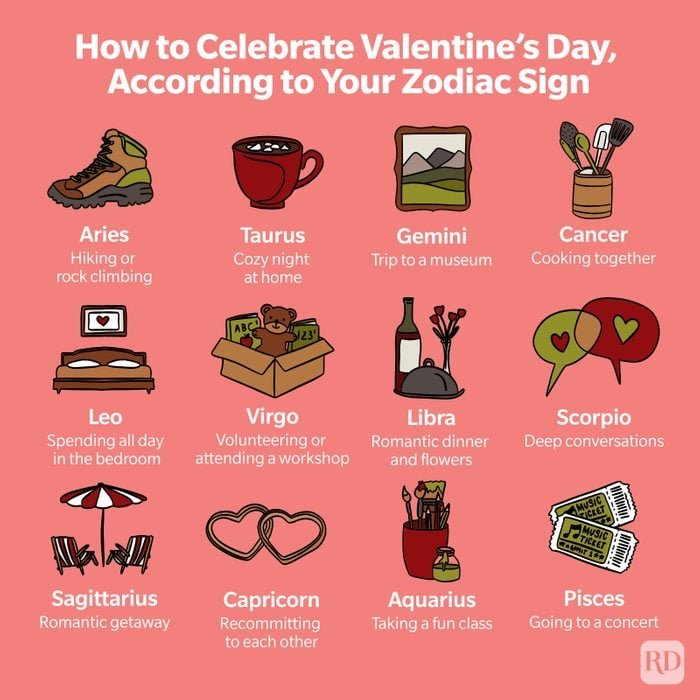
For the Adventurous Souls:
- Hike to a scenic viewpoint with a loved one, sharing a picnic with breathtaking views.
- Embark on a scavenger hunt filled with personalized clues and hidden surprises.
- Volunteer together at a local animal shelter or community garden, spreading love beyond yourselves.
- Take a dance class together, learning a new skill and expressing yourselves through movement.
- Plan a stargazing adventure, lying under the night sky and sharing dreams and aspirations.
For the Creative Spirits:
- Write each other heartfelt love letters, expressing your deepest emotions and appreciation.
- Create personalized artwork or crafts, pouring your love into something tangible.
- Compose a song or poem dedicated to your loved one, expressing your feelings in a unique way.
- Plan a themed dinner party with friends, celebrating love in all its forms through decorations, food, and laughter.
- Host a game night with personalized challenges and playful dares, adding a touch of fun and competition.
For the Homebodies:
- Indulge in a spa day at home with DIY treatments, relaxing music, and quality time together.
- Curl up with a cozy blanket and a stack of love stories, sharing your favorite quotes and chapters.
- Cook a delicious meal together, trying a new recipe and savoring the fruits of your labor.
- Organize a board game marathon, reliving childhood memories and creating new ones.
- Plan a movie marathon with themed snacks, cuddles, and heartfelt discussions.
For the Singles and the Unconventionals:
- Treat yourself to a day of self-care, pampering yourself and celebrating your own unique love.
- Organize a Galentine's Day or Bro-mance Day, celebrating platonic love with friends and activities you enjoy.
- Volunteer at a cause you're passionate about, spreading love and making a positive impact.
- Start a gratitude journal, reflecting on the love and blessings present in your life.
- Host a "Love is Blind" potluck, bringing friends together and celebrating the beauty of inner qualities.
Remember:
- The most important aspect is to celebrate authentically: Choose activities that resonate with your values and relationships, not societal expectations.
- Focus on quality time and connection: Make genuine effort to connect with loved ones, create lasting memories, and express your appreciation.
- Embrace the spirit of love: Let Valentine's Day be a reminder to celebrate love in all its forms, including self-love, friendship, family, and community.
By thinking outside the box and embracing creativity, you can turn Valentine's Day into a truly meaningful and memorable experience, one that celebrates love in its authentic and diverse forms.
A Celebration of Love in All its Forms: Concluding Thoughts
Valentine's Day, with its complex history and diverse traditions, serves as a window into the multifaceted nature of love. While commercialization and societal expectations can sometimes overshadow its essence, remembering the core message of love and connection is crucial. Whether you celebrate with a grand gesture, a quiet evening with loved ones, or an act of self-care, let Valentine's Day be a reminder to appreciate the love that enriches our lives in countless ways.
Embrace the opportunity to express love beyond romantic relationships. Nurture the bonds with family, friends, and even strangers through acts of kindness and compassion. Celebrate self-love by recognizing your own worth and fostering your well-being. Remember, love knows no boundaries, and its expression is as diverse as the individuals who experience it.
So, as Valentine's Day approaches, choose to celebrate authentically. Embrace the spirit of love, not just for a day, but throughout the year. Let your actions speak louder than words, spreading kindness, understanding, and appreciation for the love that fills our world in its vibrant variety.
Dive Deeper into Love and Valentine's Day: Recommended Resources
Books:
- "The History of Valentine's Day" by Leslie Dunkling: Explores the fascinating history and evolution of the holiday, from its pagan roots to modern-day celebrations.
- "The Gift of Love: A Book of Inspiration and Celebration" by Leo Buscaglia: Offers heartwarming stories and reflections on love in all its forms, perfect for a romantic read.
- "Love in a Global Age: Examining the Role of Cultural Diversity in Relationships" by Diane Protchard: Delves into the impact of cultural differences on how love is expressed and celebrated around the world.
Websites:
- The Valentine's Day Museum: https://thevalentine.org/ - Offers a virtual tour of the museum's extensive collection of Valentine's Day memorabilia.
- National Geographic: Around the World in 8 Love Bites: https://kids.nationalgeographic.com/celebrations/article/valentines-day - A visual journey showcasing unique Valentine's Day traditions across the globe.
- Smithsonian Magazine: 10 Facts About Valentine's Day: https://www.smithsonianmag.com/tag/valentines-day/ - Uncovers surprising facts and forgotten stories about the origins and customs associated with the holiday.
- BBC Culture: How the world celebrates Valentine's Day: https://www.bbc.com/travel/article/20110211-travelwise-weird-ways-to-celebrate-valentines-day - Explores the diverse ways different cultures approach and celebrate love on February 14th.
Documentaries:
- "The Story of Valentine's Day" (History Channel): https://www.history.com/topics/valentines-day/history-of-valentines-day-video - A historical overview of the holiday, exploring its origins, traditions, and commercialization.
- "Love Around the Globe" (National Geographic): https://www.nationalgeographic.org/thisday/feb14/happy-valentines-day/ - A visual exploration of diverse love stories and celebrations from around the world.
- "The Science of Love" (Netflix): Examines the biological and psychological underpinnings of love, offering insights into human connection and attraction.
Podcasts:
- "Modern Love" (The New York Times): Real-life love stories from diverse voices, offering heartwarming and thought-provoking perspectives.
- "Call Your Girlfriend": Hosts Aminatou Sow and Ann Friedman discuss love, relationships, and pop culture with wit and humor.
- "Love and Radio" (Gimlet Media): Intimate stories about love, loss, and human connection, told with sensitivity and depth.
References and Resources:
History and Traditions:
- History Channel: Valentine's Day https://www.history.com/topics/valentines-day/history-of-valentines-day-video
- Britannica: Valentine's Day https://www.britannica.com/video/239350/history-of-Valentines-Day
- Smithsonian Magazine: 10 Facts About Valentine's Day https://www.smithsonianmag.com/tag/valentines-day/
- National Geographic: Around the World in 8 Love Bites: How Different Cultures Celebrate Valentine's Day https://www.nationalgeographic.org/thisday/feb14/happy-valentines-day/
Global Perspectives:
- BBC Culture: How the world celebrates Valentine's Day https://traveltriangle.com/blog/valentines-day-traditions-around-the-world/
- Time Magazine: How 10 Countries Around the World Celebrate Valentine's Day https://time.com/tag/valentines-day/
- The Culture Trip: 10 Unique Valentine's Day Traditions Around the World https://www.wanderlust.co.uk/content/strange-valentines-day-traditions-from-around-the-world/
Psychology and Sociology:
- Psychology Today: Why We Celebrate Valentine's Day https://www.psychologytoday.com/us/blog/close-encounters/202202/could-valentine-s-day-be-bad-some-relationships
- The Conversation: Why do we celebrate Valentine's Day, and is it bad for mental health? https://theconversation.com/global/topics/valentines-day-49631
- Journal of Consumer Research: Valentine's Day: Romantic Ritual and the Quest for Interpersonal Connection https://press.uchicago.edu/ucp/journals/issues/jacr.html
Media and Literature:
- The Atlantic: How Movies Shaped Our Expectations for Valentine's Day https://www.theatlantic.com/category/relationships/
- HuffPost: How Books Make Us Feel About Love on Valentine's Day https://www.huffpost.com/entertainment/topic/valentines-day
- NPR: Love Songs: How Music Shapes Our Expectations of Romance https://www.npr.org/series/122356178/songs-we-love
Other Resources:
- TED Talk: The 5 Love Languages - Gary Chapman https://blog.ed.ted.com/2021/03/15/do-you-know-the-5-love-languages-heres-what-they-are-and-how-to-use-them/
- The Gottman Institute: Relationship Resources https://www.gottman.com/
- Love is Respect: Healthy Relationships Resources https://www.loveisrespect.org/
What's Your Reaction?















